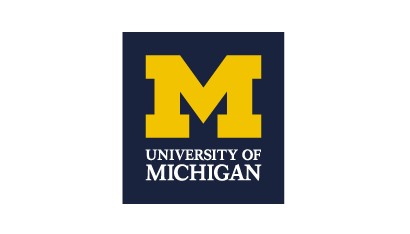JetBlue and the Competitor Perspective
How would competitors be assessing the JetBlue team’s decisions as the Valentine’s Day winter storm approached the New York area? Would they have any interest in these decisions at all? Or would you expect this to be an “everyone for themselves” situation where the decisions of individual competitors don’t really matter?
Thinking about the competitive landscape leading up to the Valentine’s Weekend, it’s interesting to consider why JetBlue’s competitors were so quick to cancel large parts of their flight schedule in and out of the NY area ahead of the predicted storm. In fact, if you want to be a competitive force in whatever industry you decide to be a part of, you need to understand, the best that you can, why your competitors make the choices that they do. Generally, you’ll find that the answers are relatively intuitive. But they are still answers you should be exploring to be the best competitor you can be.
Why were JetBlue’s competitors so quick to cancel? First, they flew much smaller percentages of their operations in the NY area than JetBlue did. Cancelling NY operations for Delta or American was a difficult choice, but one that didn’t as significantly impact their overall flight schedule or revenue plan as it would have impacted JetBlue.
Also, and perhaps more importantly, these airlines, being much more mature than JetBlue, knew that thoughtful and purposeful cancellations ahead of a weather system like this one would make it much easier to resume operations once the storm had passed. As JetBlue learned during this crisis, it’s one thing to have to cancel and re-route a few flights on short notice, but it is an entirely different thing to have to completely rebuild a flight schedule that had planned to operate about 500 flights each day – even with crews and airplanes in predictable places. During the crisis, JetBlue had to recreate a 500-flight schedule with ALL of its crews and airplanes in different places than they were planned to be. To make matters worse, JetBlue leadership had been slow to make investments in technology that would have allowed this to be done with what amounts to the push of a button – which is essentially what airlines have today – including JetBlue. At the time, however, on the back of two challenging years of rapidly rising costs – driven by fuel price increases – JetBlue just didn’t have the resources to invest in updating its technology infrastructure. Company leaders wanted to, but they just couldn’t reduce their liquidity given the uncertain energy market.
As the Valentine’s Day crisis played out, the reconstruction of an entire flight operations plan became a long and painful process. Long enough that it required three additional days after the weather had moved on, to get things up and running again.
Given the situation, how might you think about competitors as stakeholders? Are they really? Can you think of why, consistent with stakeholder theory, competitors might fit into the stakeholder paradigm?
Initially, when JetBlue demonstrated a commitment to operating when all of its competitors had cancelled, the airline was clearly trying to apply some competitive pressure. If JetBlue was able to pull this off, it might create exactly the sort of message to customers that it wanted to send – that the company truly was different than the competition. So, although it can never be known for sure, there were probably a few brief moments of “those son of a guns. If they make this work, they’ll look like heroes and we’ll look like we don’t care about our customers.” Maybe they didn’t think that, but perhaps they did. Ultimately, it doesn’t matter what they thought. JetBlue attempted to operate and failed.
What JetBlue did accomplish, however, was to shine a spotlight on the industry. By stranding customers in terminals, which was ugly in and of itself, to stranding them in airplanes – in some cases, for hours – the airline raised regulatory concerns not just for JetBlue, but for every player in the industry. “If JetBlue could create this much pain and suffering,” so the stream of consciousness went in the minds of regulators and governmental officials, “what’s to stop other airlines from doing the same thing?”
This logic, driven by circumstances, not by a complete assessment of the evidence, then morphed into regulators thinking (and some of them actually saying): “We represent our constituents and we just can’t let this happen. Those airlines are making decisions for their own benefit, not their customer’s. They can’t be trusted to do the right things on their own, so we need more regulation across the industry. We should make a rule that imposes fines for unnecessary delays. That would force them consider how their actions are impacting customers. Maybe we should also create a rule that requires airlines to provide opportunities for customers to deplane after sitting on a plane for an extended period of time.” And so the discussion of other ‘potentially helpful’ regulations would play on. In fact, regulations like these are regular topics of discussion across the industry by airlines and regulators alike.
These types of reactions from regulators are exactly why competitors can and should be thought of as stakeholders. In some industries – and the airline industry is a good example – actions by one competitor can have an impact on all of the others – beyond the simple impact of what might be considered traditional competition, like competition on price or variety or product features or some other factor.
When a company makes choices that put the entire sector at risk in any way – increased governmental oversight, decreased customer confidence, increasing costs, etc. – competitors can be impacted in ways that create tension. In these cases, competitive responses sometimes extend beyond typical competition and can go so far as to threaten the survival of an entire industry – much like the Collateralized Debt Obligation (CDO) did for the mortgage banking industry in the United States during the last decade. For many large, established, previously successful banks, the CDO was the beginning of the end. The point here is not to argue the pros and cons of intent – as could be argued for JetBlue’s decision to operate, or a particular mortgage bank’s decision to offer CDOs – but to highlight the potential impact a competitor could have on an industry as a whole. Which is why considering competitors as stakeholders can offer a helpful frame.
Another JetBlue decision that resulted from the events of President’s Day weekend, 2007, and impacted the competitive landscape in the industry was the choice JetBlue made to launch their Customer Bill of Rights. While the consequences of JetBlue’s poor decision to operate energized regulators and impacted all of its competitors in an unintended and unfortunate way, JetBlue’s decision to announce its Bill of Rights was very intentional – and it was designed to impact the industry.
JetBlue leadership believed that this would be a great way to demonstrate to customers a heightened commitment to better performance — a performance guarantee. It was designed to differentiate the airline from competitors. They didn’t have such a clearly articulated guarantee, so JetBlue would appear to be a leader in this area. But if you further unpack the company’s intensions, particularly as you see this action through the lens of competitors as stakeholders, how do you think this move was ultimately viewed by JetBlue’s competitors? If you were an executive at Delta, how would you view JetBlue’s announcement?
Leaders at JetBlue believed that executives at airlines across North America would view JetBlue’s Bill of Rights announcement as timely, responsible, and generally very good for the industry. Why? Does that surprise you? First, airlines don’t like delays any more than customers do. Delays create challenges for many different aspects of the business and they always cost more than when flights operate on time. A formalized matrix of customer compensation for delays was actually something all airlines already either had in place, to some degree, or had been contemplating. While JetBlue might have been a first mover in announcing something that was elegantly packaged, it wasn’t an advantage that would last long. On top of that, JetBlue had made its announcement on the back end of a major melt-down. Bonus points for JetBlue’s creativity, but it wasn’t going to create a lasting competitive advantage.
Second, airlines were universally concerned that JetBlue’s “irresponsible” decision to operate would prompt elected officials to impose increased regulation. Generally, if you speak to just about any business leader, they will tell you that they would prefer less regulation to more. Also, interestingly, if you speak to just about any governmental official, they will tell you that they only want to increase regulation when business decisions aren’t being made in what they consider to be “in the best interests of citizens or customers”. They don’t generally want more regulations, but if companies aren’t being responsible, then regulations may be required to make them so.
JetBlue’s announcement of the Bill of Rights sent the message to regulators that “we are taking steps to regulate ourselves — to be more responsible to customers; to own our mistakes; and to make things right without a regulation that requires us to do so.” Viewing this action from a competitor as stakeholder perspective, JetBlue’s competitors found it to be significantly beneficial for all.
Organizational leaders may not spend much time thinking about competitors as stakeholders. They may not have to, depending on the state of their industry. But in some cases, adding this perspective to the collection of stakeholders a company should be considering may provide a path to sector leadership that allows an organization to be significantly more competitive and could increase an enterprise’s ability to influence the direction of an industry, as JetBlue has done in so many ways.
Conclusion
There you have it. As JetBlue leadership worked through its operational crisis, the interests of its stakeholders were front and center. In this case, it was JetBlue’s collection of primary stakeholders that drew most of their attention: Customers, Employees, Regulators, Media, Investors, and Competitors. Each of these groups had unique and, in many ways, competing interests. In the end, JetBlue’s ability to understand, appreciate, and address the interests of their stakeholders during and after its worst operational crisis to date allowed the company to not only survive, but to emerge from this crisis a stronger company with an even better connection to and relationship with its stakeholders.
Share this
High Stakes Leadership: Leading in Times of Crisis

High Stakes Leadership: Leading in Times of Crisis


Reach your personal and professional goals
Unlock access to hundreds of expert online courses and degrees from top universities and educators to gain accredited qualifications and professional CV-building certificates.
Join over 18 million learners to launch, switch or build upon your career, all at your own pace, across a wide range of topic areas.
Register to receive updates
-
Create an account to receive our newsletter, course recommendations and promotions.
Register for free







